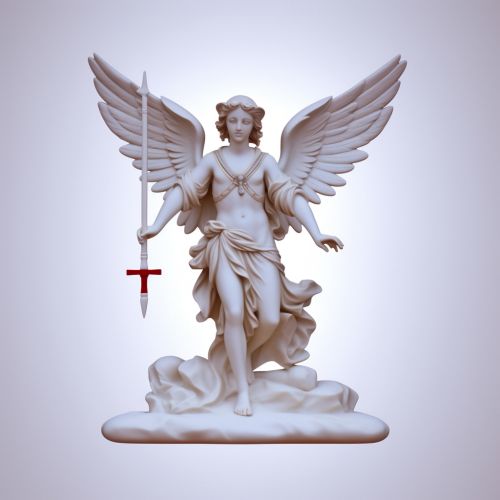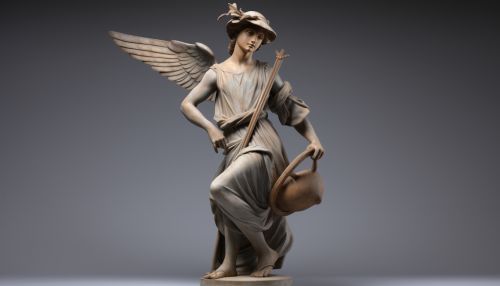Hermes
Origins and Birth
Hermes, in Greek mythology, is the son of Zeus and the Pleiad Maia. Often depicted as a cunning and swift deity, Hermes served as the messenger of the gods, guide of the dead and protector of merchants, shepherds, gamblers, liars, and thieves. He is also known as the god of transitions, boundaries, and travelers.


Attributes and Symbols
Hermes is often depicted wearing a wide-brimmed hat or a winged cap, winged sandals, and the herald's staff (kerykeion in Greek, or Caduceus in Latin). The Caduceus, a short staff entwined by two serpents and topped with wings, is a symbol of commerce and negotiation, two realms in which balanced exchange and reciprocity are recognized as ideals. This staff also found in later depictions of the Roman god Mercury.
Role as a Messenger
As the messenger of the gods, Hermes is involved in many mythological episodes. He is the fastest of the gods and uses his speed to carry out the commands of Zeus. He also has the ability to move freely between the mortal and divine worlds, a trait he shares with Hecate, the goddess of crossroads and borders.
Hermes and the Infant Dionysus
One of the most famous myths involving Hermes is the story of the infant Dionysus. After the death of Dionysus' mother Semele, Zeus entrusted the infant Dionysus to Hermes. Hermes, in turn, brought Dionysus to the nymphs of Nysa, who raised the god until he reached adulthood.
Hermes and Argus
Another famous myth involving Hermes is his slaying of Argus, a giant with a hundred eyes. Hera, the wife of Zeus, assigned Argus to guard the nymph Io, whom Zeus loved and had transformed into a heifer to protect her from Hera's wrath. To rescue Io, Hermes used his cunning to lull Argus to sleep and then slew him.
Worship and Cult
The worship of Hermes was widespread in ancient Greece. As the god of transitions and boundaries, Hermes was often invoked for rites of passage including the birth of children and initiation into adulthood. He was also a psychopomp, guiding the souls of the dead to the afterlife. Hermes was particularly worshipped by shepherds, due to his connection to land travel and his invention of the lyre and pipes. His major festival, the Hermaia, was celebrated in many cities in Greece.
Hermes in Literature
Hermes appears in a variety of ancient Greek literary sources. He is a prominent character in Homer's Iliad, where he is depicted as a guide and protector of the Trojan hero Hector. He also appears in the Odyssey, where he helps Odysseus in his journey home by providing him with the herb moly to protect him from Circe's magic.
Hermes in Art
In ancient Greek art, Hermes is depicted as either a mature bearded man or a handsome young man, wearing a cloak and a winged hat and sandals, and often carrying a herald's staff. He is a common subject in ancient Greek vase painting and sculpture. In the Roman period, Hermes was often conflated with the Roman god Mercury, who was also a messenger god and was depicted with similar attributes.
Hermes in Modern Times
In modern times, Hermes continues to be a symbol of speed and commerce. His image is used in the logos of many companies, most notably the French luxury brand Hermès. His name is also used in the term "hermeneutics", the study of interpretation and understanding, reflecting his role as a messenger and interpreter of divine will.
